Do you know how illusions work? Can you tell which line is longer? Why identical circles appear to be different sizes? Why stationary shapes seem to move? It’s amazing to consider that a person’s mind can literally be ‘bent’ by a simple image. More like fooled than really bent, but optical illusions really can play tricks with you. Just look at the ‘moving tubes’ in the first slide below, and you’ll get what we mean. How is THAT a stationary image?! But it is….isn’t it?…
1. Moving Tubes
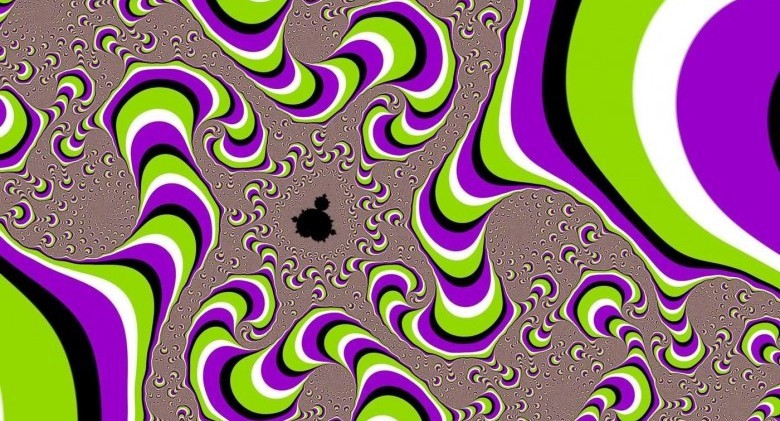
Peripheral drift causes the illusion of movement in images that obviously are not moving. As you read these words, notice how the tubes “move.”
2. Don’t Look Down

Put on your blue slippers to preserve the 2-dimensional artistic illusion of depth. And close your eyes if you feel faint.
3. Rolling Rice
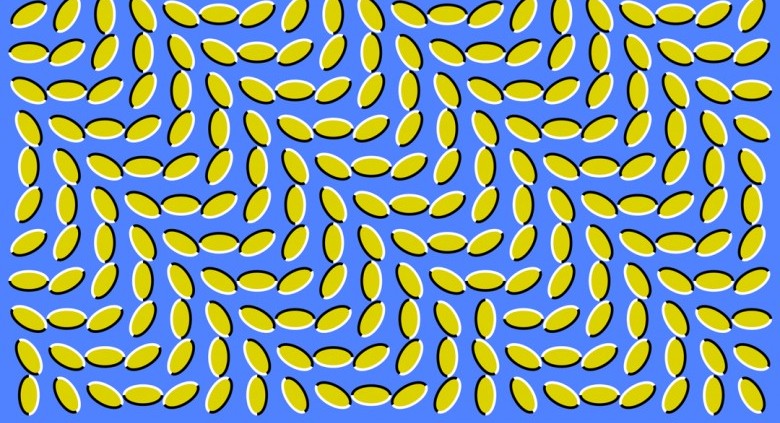
Peripheral drift tricks the brain into seeing movement based in part on how we perceive light and dark and in part on how our eye moves.
4. Under Or Out?

Erik Johansson uses hundreds of images to make one picture using digital alteration software. (Wait til you see his work in #19.)
5. Café Wall
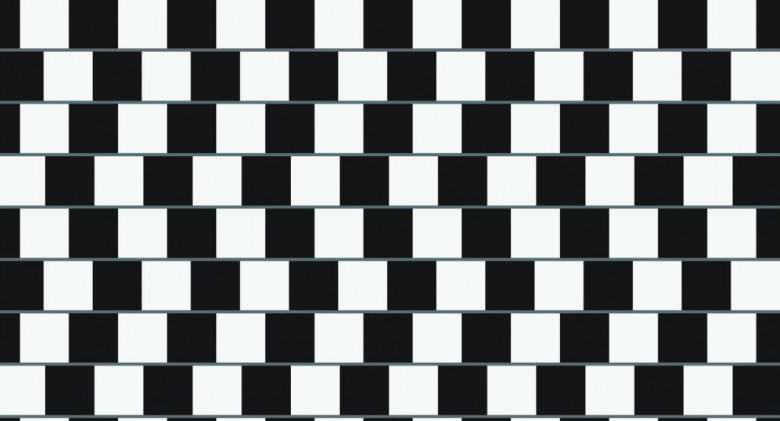
Are the horizontal lines crooked? Or parallel? The black boxes change our perception and make us think the lines are crooked in this Café Wall illusion.
6. Hering
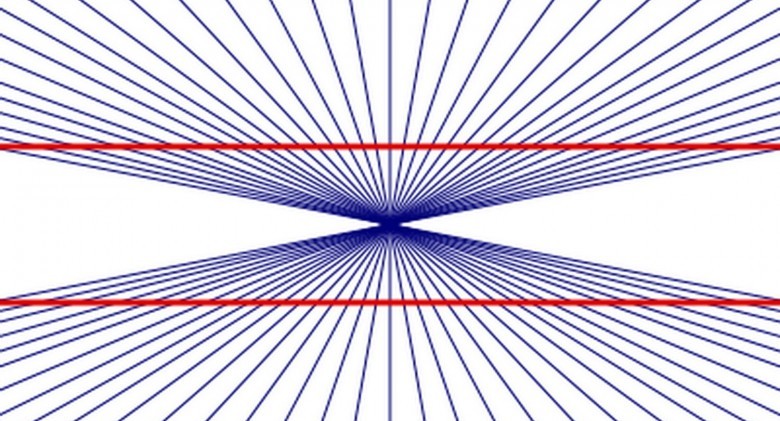
The Hering illusion is named for Ewald Hering who published the illusion in 1861. He showed that straight, parallel lines appear bent if there are background lines radiating outward.
7. Spiral
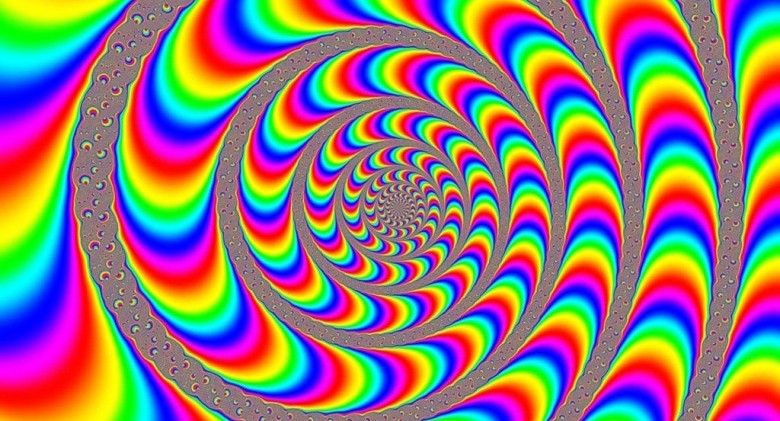
Spiral rainbow. Does it move for you? Does it make you feel groovy? (Or nauseated?)
8. Shelves
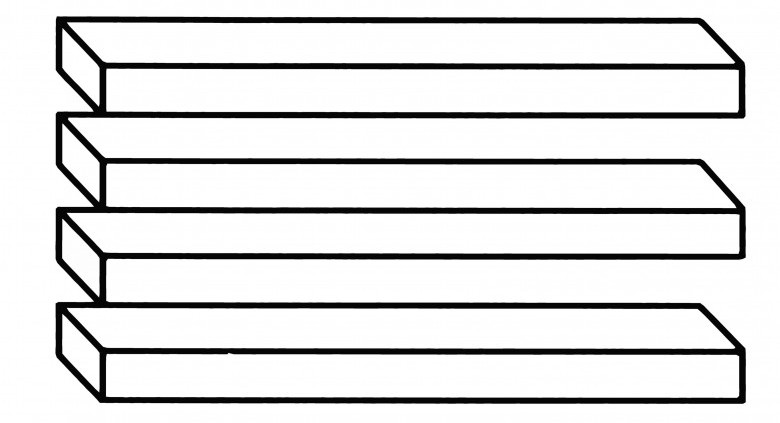
A visual cognitive illusion is the result of unconscious inferences we make based on our assumptions about the world, i.e. our expectations. First explained by Hermann Helmholtz, this type of illusion can continue to confuse you even when you know the trick. Case in point: how many shelves are there?
9. Oval Motion
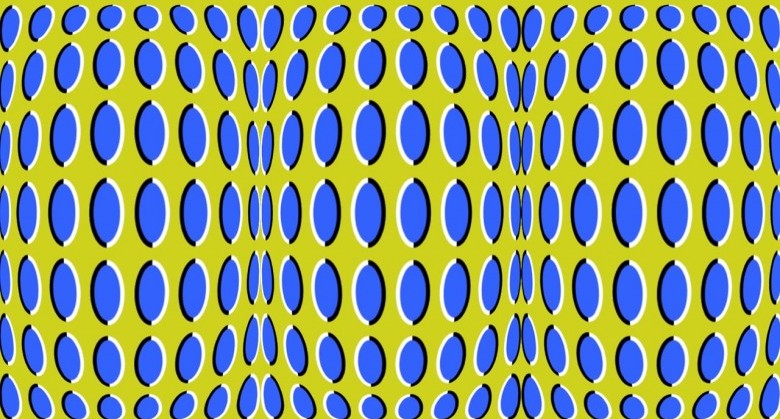
Rolling “movement,” caused by the dark and light edges of the ovals.
10. Impossible Construction

Which way is up? Which way is down? M.C. Escher (1898-1972) created a series of illusionary art like this impossible construction.
11. Up Or Down?
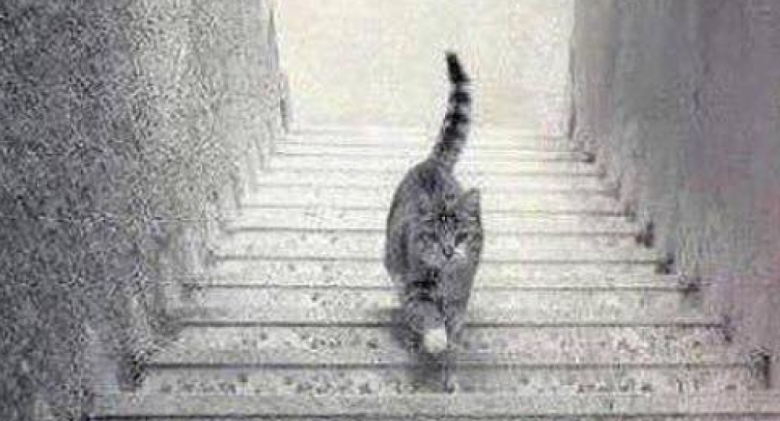
Is he going up. . .or down? This image has generated lots of speculation on the web, but the answer is “down,” as evident by the cat’s left paw.
12. The Moon Illusion

Have you ever noticed how giant the moon looks when it’s close to the horizon? It’s an illusion. It just appears bigger. (So scientists say.)
13. 2D Becomes 3D

Anamorphic illustrations, a.k.a. mind-messing illusions, use light, shading, and perspective to fool the eye. 2D becomes 3D and the inanimate becomes animate. Or so it seems.
14. Ready? Aim. Draw.
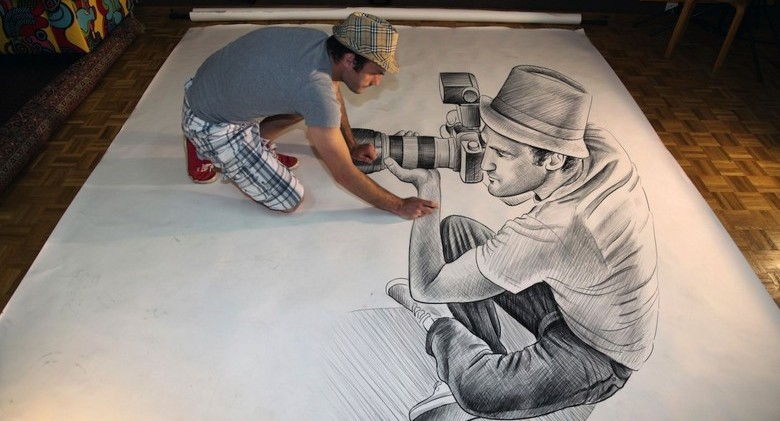
This image gives you a glimpse “behind the curtain” as Ben Heine applies the finishing touches on a life-size anamorphic illustration of himself. To appear the proper dimension, the illustration must be extra large.
15. Sharks

One of the tricks of anamorphic illustrations is to draw the backdrop. The important-looking sheets under the sharks are part of the illustration, making the illusion of the swimming guards possible. Read and you’ll see the writing is not actually worth guarding.
16. The Hermann Grid
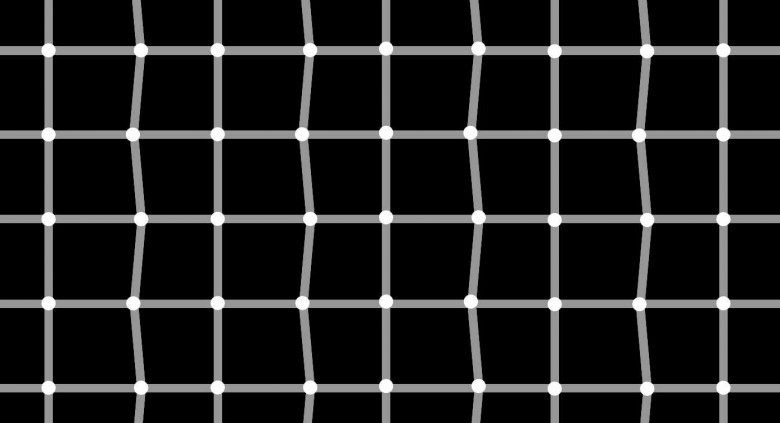
The Hermann grid relies on a process in our brains called lateral inhibition that helps us define the edges of objects. The illusion of dark dots is your eye filling in information that is not really there.
17. The Ponzo Illusion
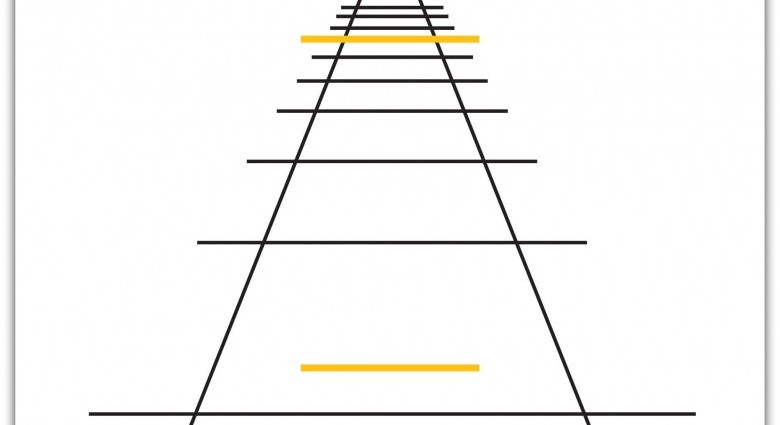
Which yellow line is longer? Mario Ponzo (1182-1960) created this illusion to suggest that our mind judges an object’s size based on its background. If you haven’t guessed, both yellow lines are the same length. It is called the Ponzo illusion.
18. Cubes
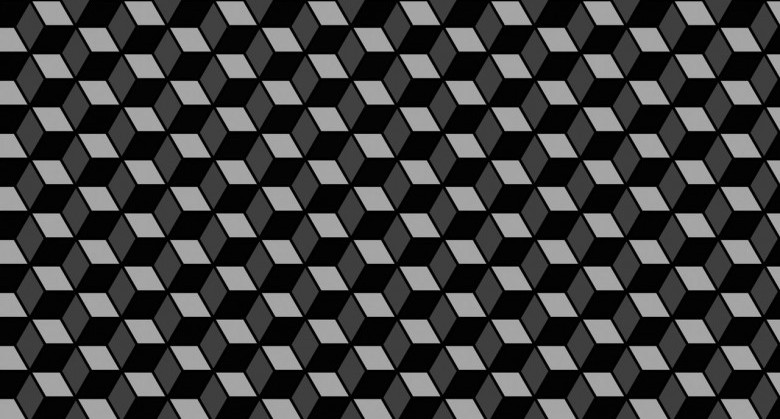
Patterns and shades of color create the illusion of movement in this classic geometric cube pattern made famous in the video game Q*Bert.
19. Erik Johansson’s Work

Erik Johansson used several images to make this one image. Can your eyes and brain make sense of it?
20. That’s Deep
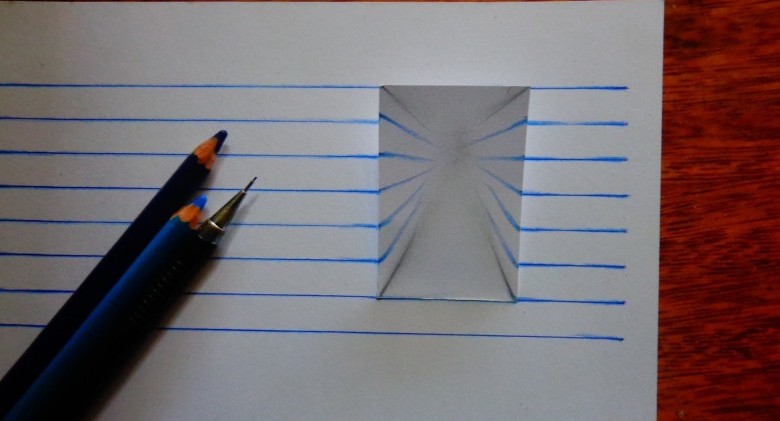
Turning 2D into 3D is just cool. This anamorphic illustration includes the canvass, i.e. the lined paper, to achieve the 3-dimensional effect.
21. 3D Grafitti
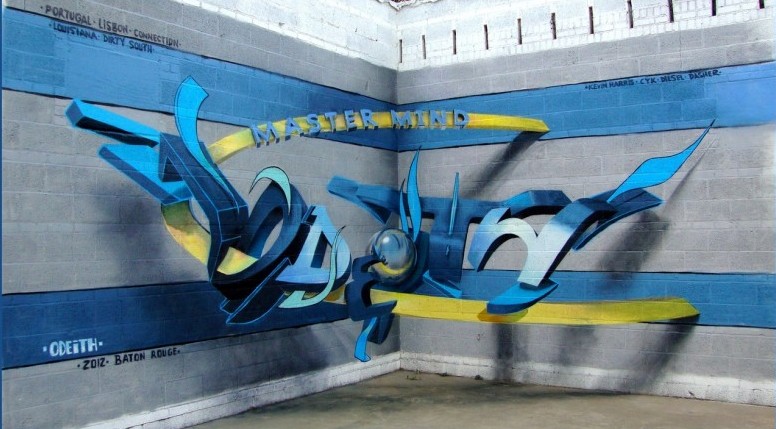
Anamorphic 3D corner art. If you like this one by Odeith, you’ll love #25.
22. Muller-Lyer

In these examples of the Muller-Lyer illusion, which line is longer: the one on top or the one on the bottom? They are the same length, and scientists are still groping for an answer as to why these lines trick our brain.
23. Dots
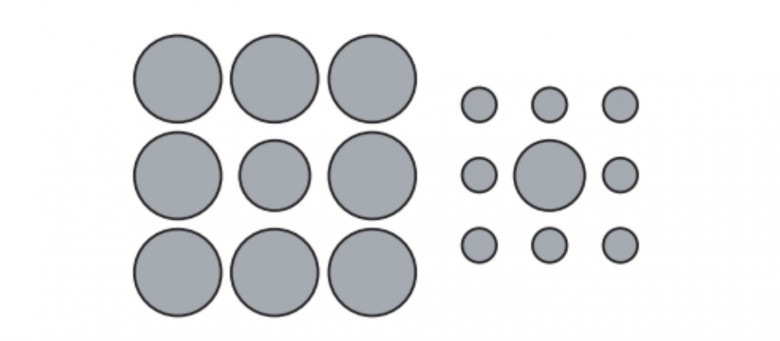
The Ebbinghaus illusion (Titchener circles) relies on relative size to toy with our perception. The circles in the center are the same size, but when surrounded by different sizes, we “see” something different.
24. Zöllner
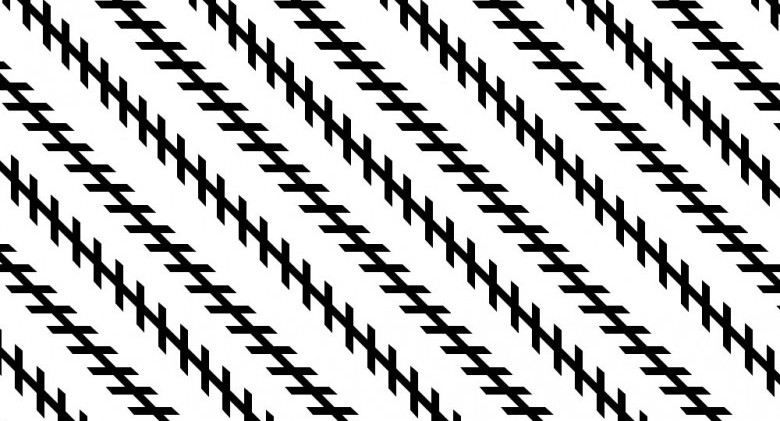
This is an example of the Zöllner illusion, named for Johann Karl Friedrich Zöllner. It’s a pattern around parallel lines giving the illusion that the lines are not parallel.
25. Odeith’s Tag

Master street artist Odeith does it again with this anamorphic 3D corner art tag. To experience the illusion of depth, you must view it from a specific angle.
26. Pavement Art
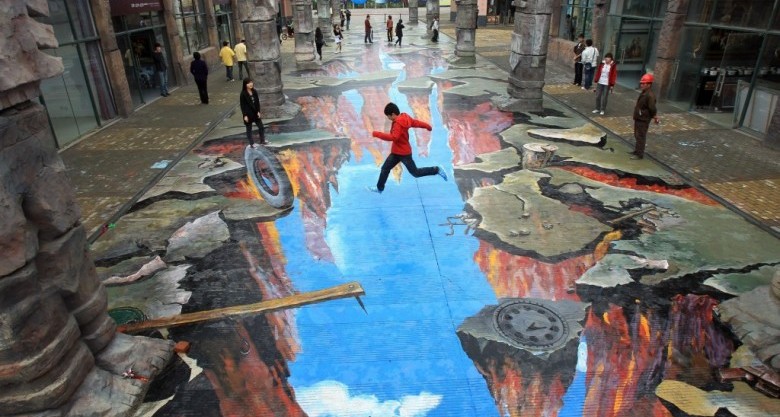
That is so dangerous. This form of anamorphic street art was pioneered by Kurt Wenner who prefers to call it “Pavement Art.” If viewed from the anticipated angle, you’ll experience the illusion. If not, you’ll see elongated and unrecognizable strokes.
27. Escher
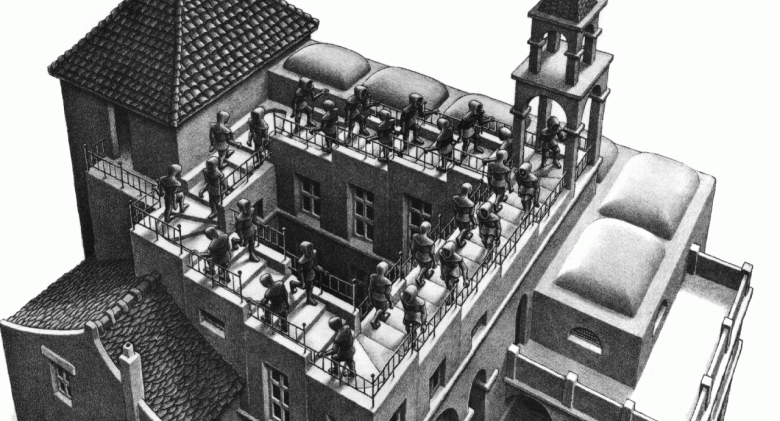
Penrose stairs is a continuous loop of stairs with four 90 degree turns. MC Escher included them in his brain-squeezing work.
28. Chess
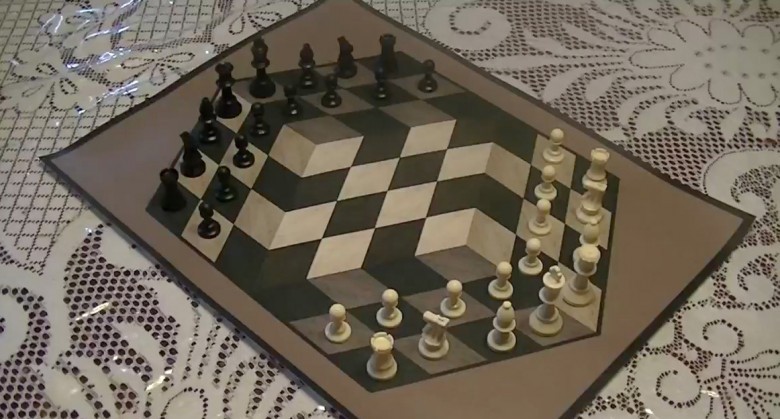
This alternate game of chess, called Chess Illusion 64, is based on the 3D illusion that is the board.
29. Pavement Art 1
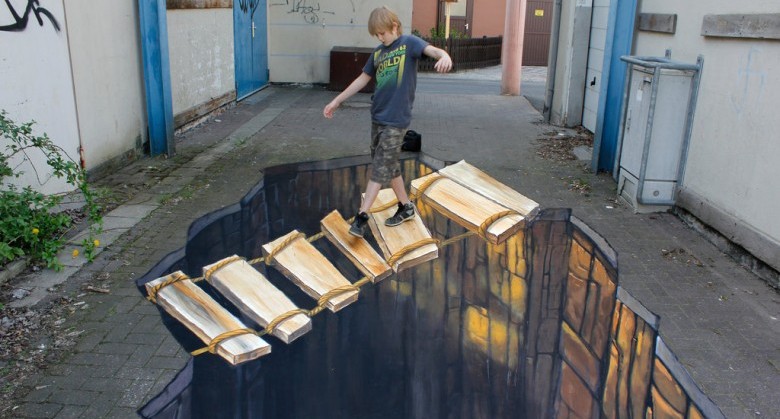
Anamorphic street art can appear so real, it could cause a mom to pray.
30. Pavement Art 2

Hate to be the guy in the silver SUV.
31. The View

Not for the faint of heart. If he was to faint, he would tumble to the sidewalk that’s just under his nose.
32. Sergio Odeith
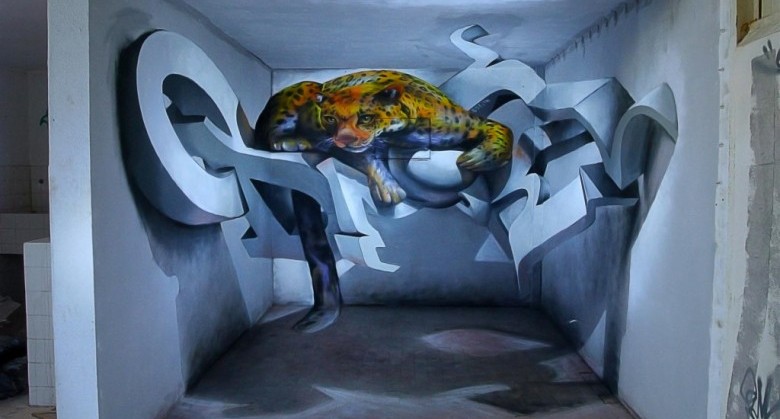
Odeith strikes again. This time, his image jumps a corridor!
33. Waves
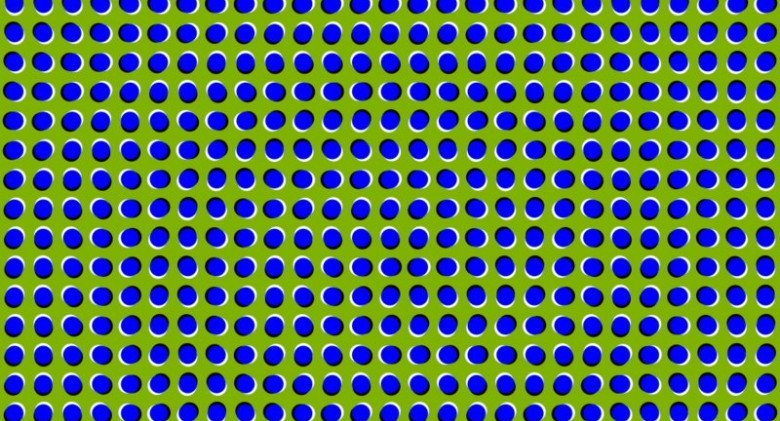
Blue ovals waving—good-bye.
[Featured image credit: www.wenatcheeyouthcircus.com]
